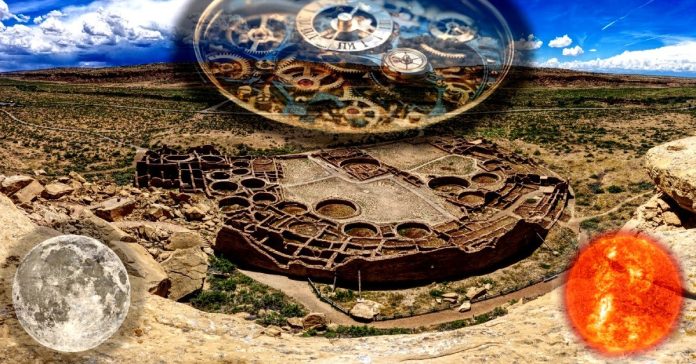Chaco Canyon, a sprawling ancient marvel in northwest New Mexico, stands as a testament to the extraordinary astronomical precision of its builders. Built by the so called “Chacoan people”, who constructed a vast network of buildings believed between 850 and 1150 AD. This complex, likely the largest and most sophisticated astronomical clock in the world, reveals an intricate understanding of solar and lunar cycles. These movements are embedded in stone structures and rock art with breathtaking accuracy.
The alignments of Chaco Canyon’s great houses and the iconic spiral petroglyph on Fajada Butte, chart the movements of the sun and moon, with such precision that they raise a haunting question. What drove these people to create this celestial masterpiece? With no written records, the answers lie solely in the stones and their cosmic connections. Evoking a profound sense of mystery and wonder.
Chaco Canyon’s Great Houses
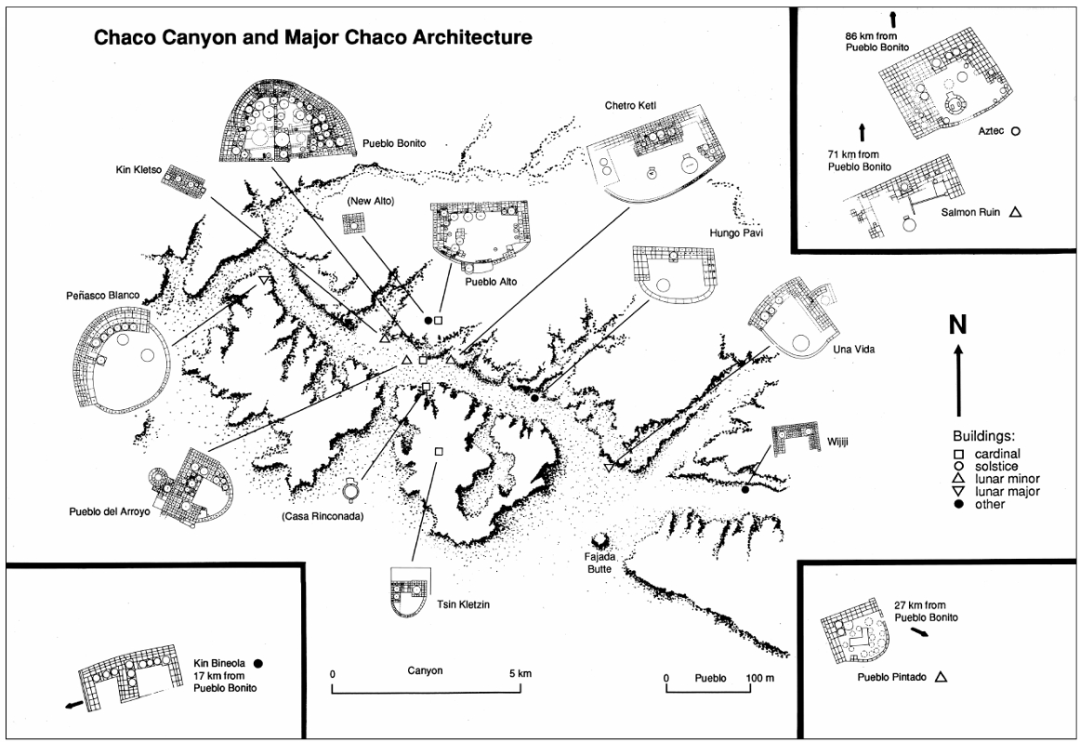
Chaco Canyon’s great houses form a monumental network; each aligned astronomically. The key structures include:
| Great House | Location | Solar Alignment | Lunar Alignment |
| Pueblo Bonito | Chaco Canyon | North-south axis, east-west walls shadowless at equinox noon; east-west wall aligns with equinox sunrise/sunset | Doorways frame moon’s northernmost rise and southernmost set during major lunar standstill (every 18.6 years). |
| Chetro Ketl | Chaco Canyon | Doorways frame summer solstice sunrise | East-west walls align with moon’s northernmost rise during major lunar standstill and southernmost set during minor standstill. |
| Casa Rinconada | Chaco Canyon | None documented | Kiva axis aligns with moon’s northernmost rise during major lunar standstill (every 18.6 years). |
| Pueblo Alto | Chaco Canyon | Aligns with solstice sunrises; north-south axis with Tsin Kletsin | No direct lunar alignment; elevated position offers views of lunar standstills across canyon. |
| Una Vida | Chaco Canyon | Aligns with equinox sunrises | Walls align with moon’s southernmost set during major lunar standstill. |
| Peñasco Blanco | Chaco Canyon | McElmo unit aligns with December solstice sunrise | Walls align with moon’s northernmost rise during minor lunar standstill. |
| Hungo Pavi | Chaco Canyon | Kiva A aligns with December solstice sunrise | No direct lunar alignment documented; possible views of lunar standstills. |
| Tsin Kletsin | Chaco Canyon | North-south alignment with Pueblo Alto; views of solstice alignments | Elevated position offers views of moon’s northernmost rise during major lunar standstill. |
| Pueblo del Arroyo | Chaco Canyon | Aligns with summer solstice sunrise | Walls align with moon’s southernmost set during minor lunar standstill. |
| Kin Kletso | Chaco Canyon | Northwest corner aligns with December solstice sunrise | Walls align with moon’s northernmost rise during major lunar standstill. |
| Salmon Ruin | Outlying (45 miles north) | Walls align with summer solstice sunrise | Walls align with moon’s southernmost set during major lunar standstill. |
| Pueblo Pintado | Outlying (15 miles east) | East-west walls align with equinox sunrises | Walls align with moon’s northernmost rise during minor lunar standstill. |
Straight roads connect these sites, forming a cosmic map. The great north road, stretching 35 miles, points north, aligns with the sun’s meridian passage.
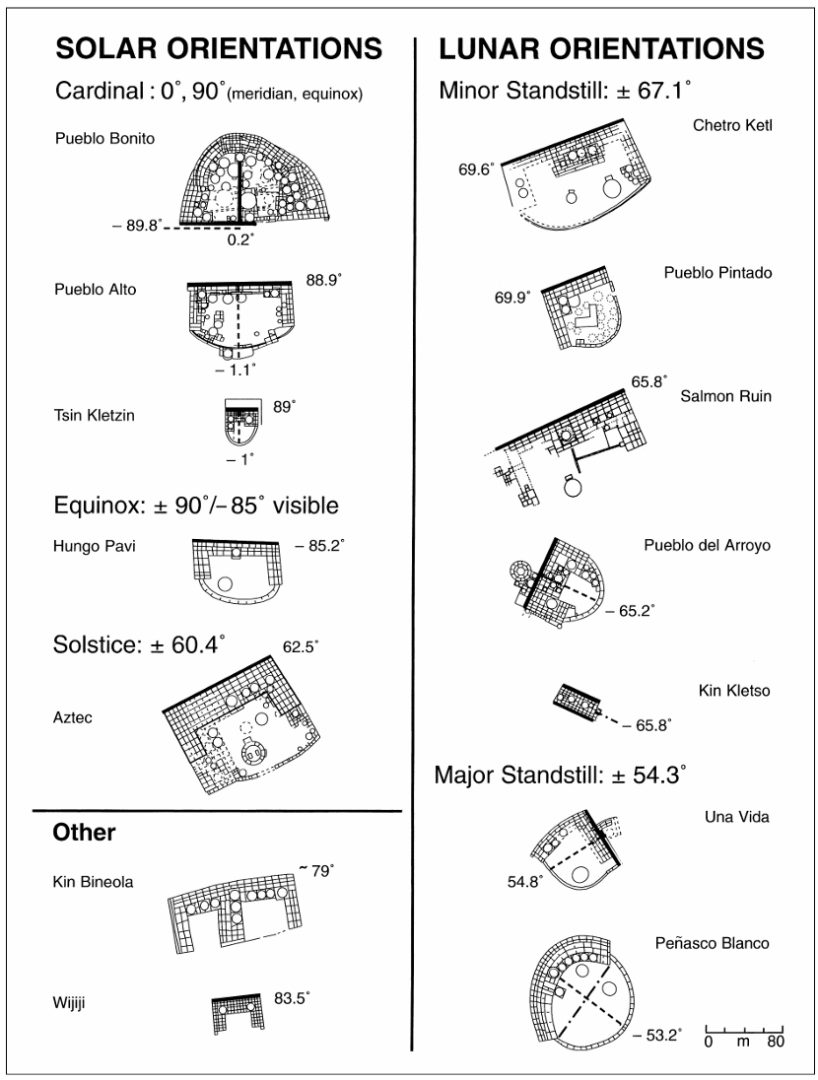
Chaco Canyons Enigma of the “Rooms”
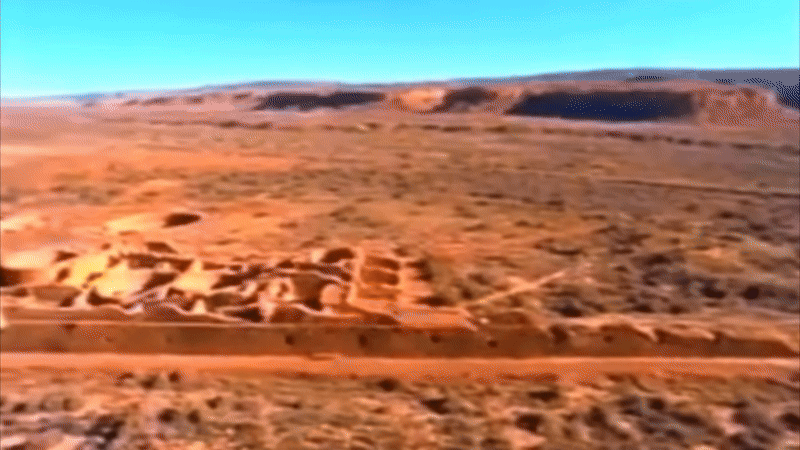
The great houses at Chaco Canyon contain hundreds of chambers traditionally called “rooms,” but their design challenges this label. Most lack entrances, exits, or hearths, showing no evidence of habitation. Chaco Canyon builders walled off rooms, accessible possibly only through roof openings. These openings could have let in a shaft of sunlight, or possibly views of the moon, while remaining mostly in darkness. For rooms on lower levels, in multi-story structures like Pueblo Bonito, even these openings would have been cut off from the sky, plunging the interiors into pitch-black solitude. Their purpose remains elusive, deepening the mystery of Chaco Canyon’s design. The structures themselves offer no clues, only their alignment with the heavens.
Lunar Precision: Tracking the Moon’s Cycle
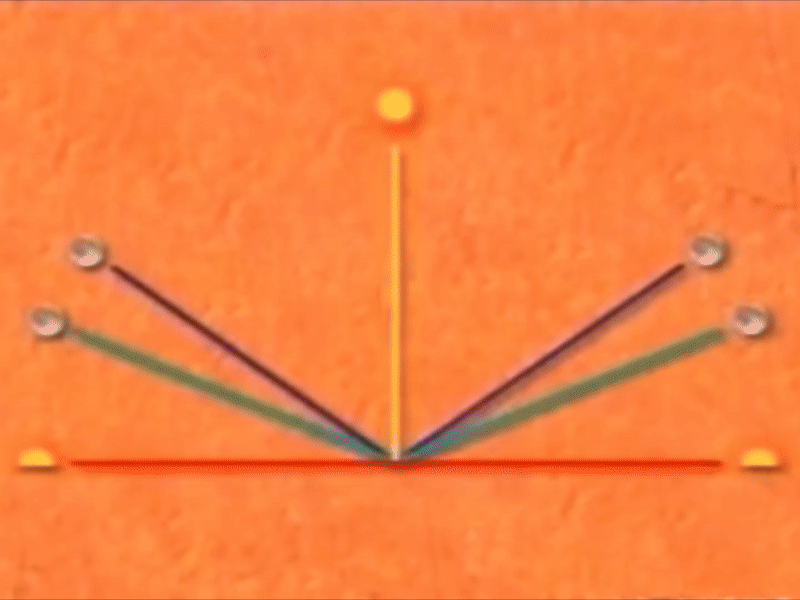
Chaco Canyon’s builders tracked the moon’s 18.6-year standstill cycle. The moon’s rising and setting points shift along the horizon during this period. To this date they are the only culture to align there monuments to the moons cycle at such a grand scale.
These alignments required decades of observation. The builder’s ability to mark such rare events shows intricate dedication to track the heavens. The lunar alignments span the region. Roads connect outlying sites, creating a vast lunar observatory. Coordinating these markers across hundreds of miles suggests a unified vision.
Chaco Canyons Astrological Petroglyphs
Solar Markers in the Spiral
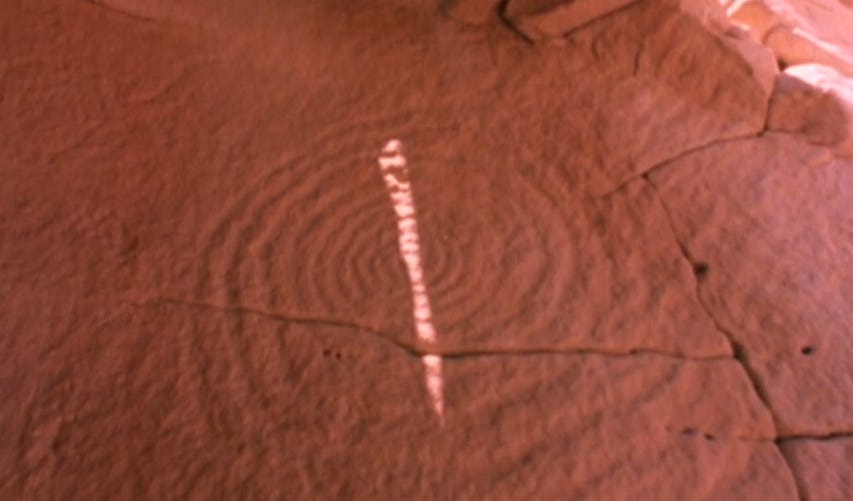
On Fajada Butte, the “Sun Dagger” petroglyph, a large spiral carved into a cliff face, serves as a solar and lunar calendar. On the summer solstice, a sliver of sunlight bisects the spiral’s center at noon, marking the longest day. During the winter solstice, two light beams frame the spiral’s edges, and on equinoxes, another smaller adjacent spiral is pierced by a single beam.
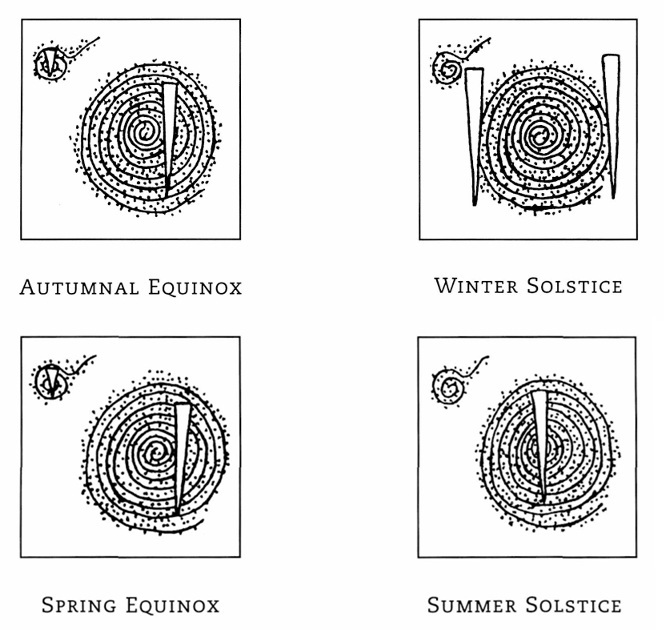
Lunar Patterns in the Spiral
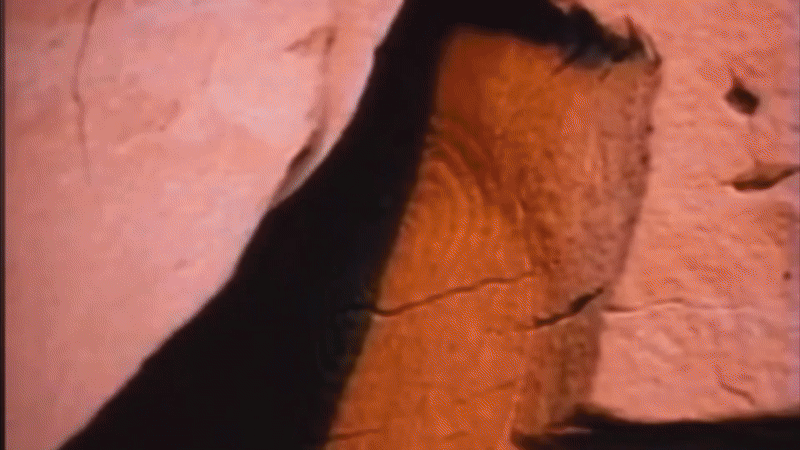
The Sun Dagger also tracks the moon’s 18.6-year cycle. During the major lunar standstill, moonlight shadows bisect the spiral’s center, mirroring the solar solstice effect. At the minor standstill, the shadow grazes the spiral’s outer band, tangent to its edge. The concentric bands of the spiral also correspond to the full moon’s shifting rising and setting points. Casting a shadow tangent to each band of the spiral creating a lunar calendar in stone.
Precisely Constructed and Placed
The petroglyph’s location, 400 feet up a treacherous butte, adds to its enigma. Chaco Canyon builders deliberately placed three massive stone slabs against the cliff in a grill-like pattern.
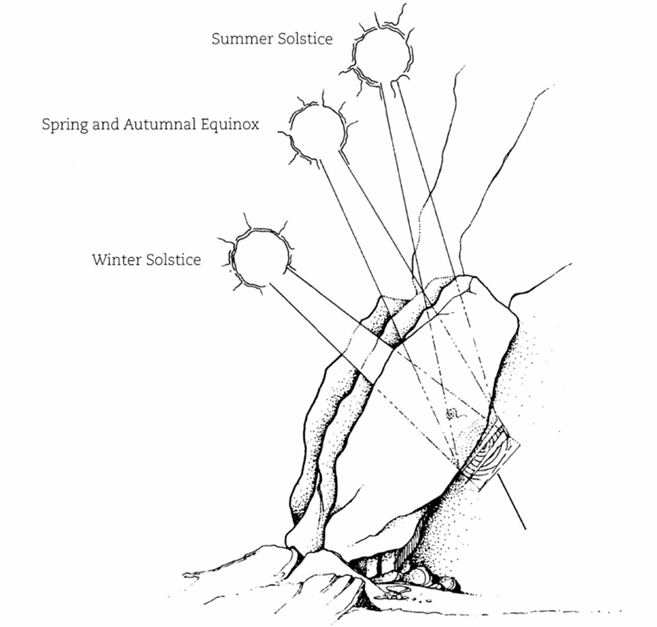
The gaps between the slabs allowed sunlight and moonlight to project onto the spiral. This dual function, capturing both solar and lunar cycles, demonstrates a level of astronomical sophistication that sets Chaco Canyon apart.
Illustrated by Lyle Yazzie
More Markers
Not far away from the hidden spiral are along the same cliff face of the butte are two more petroglyphs that track the equinoxes. One petroglyph of a snake the sun casts a shadow which perfectly bisects it at noon. And another a double spiral where a sun dagger pierces the right center spiral.
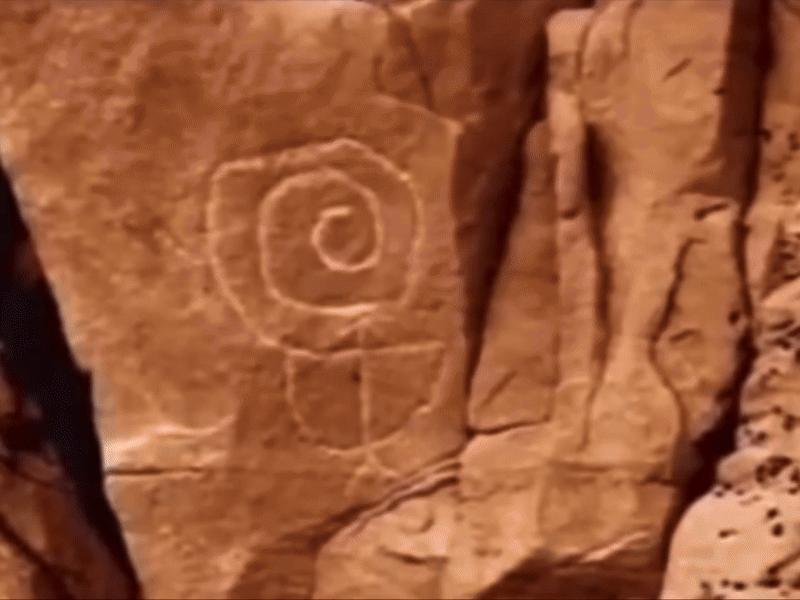
Finally another Petroglyph acts as a central marker for the entire Chaco Canyon desert timepiece. With a “D” shape, center arrow and spiral. The petroglyph when mirrored superimposes perfectly onto Pueblo Bonito.
The arrow of the petroglyph points to the rising sun, with the lower outer band perfectly tangent to the east west wall. The Spirals center perhaps a coordinate to a specific azimuth of the rising sun.
Chaco Canyon Cosmic Landscape
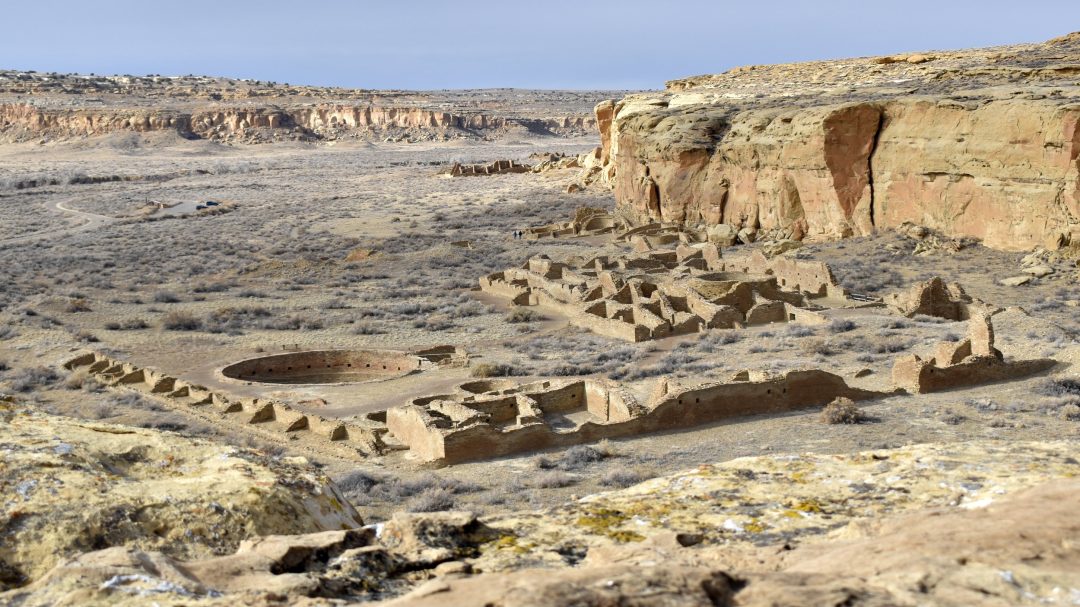
Chaco Canyon’s astronomical alignments unify its great houses, roads, and petroglyphs into a single, cohesive system. The scale of this endeavor, spanning dozens of sites across hundreds of square miles, marks Chaco Canyon as the largest and most sophisticated set of astronomical ancient ruins known. No other ancient culture achieved such a comprehensive integration of architecture and astronomy.
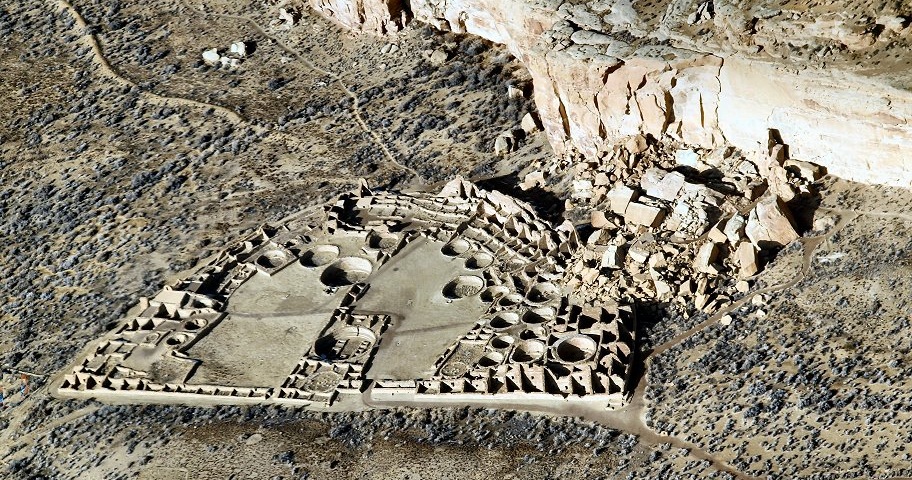
Chaco Canyon builders relied on celestial observations, likely conducted over centuries, to align their structures with the sun and moon. The great houses, built with massive stone walls, required immense labor, with a purpose tied to the heavens. The roads, some stretching for miles, connect sites in patterns that map celestial cycles. The sealed, dark “rooms” add another layer of intrigue, their function as obscure as the builders’ intentions.
Chaco Canyon’s arid landscape did support small-scale farming of maize, beans, and squash, sustained by irrigation systems like canals and check dams along the Chaco Wash. The precise celestial alignments in great houses and the Sun Dagger petroglyph would have aided these crops by marking planting seasons and rare floods tied to solar and lunar cycles. Yet, the monumental scale of these structures and their astronomical complexity, requiring centuries of observation, far exceeds the needs of meager agriculture in a resource-scarce region reliant on imported food, hinting at a grander, enigmatic purpose locked in the stones.
Chaco Canyon an Enduring Mystery
What drove Chaco Canyon builders to create this vast astronomical clock? The alignments of their great houses and the Sun Dagger petroglyph reveal a people consumed by the movements of the sun and moon. The precision of their work, achieved without telescopes or written calculations, is breathtaking. Yet, the purpose behind this monumental effort remains locked in the stones of Chaco Canyon. The shadowless walls, the spiraling light, and the silent chambers offer only their celestial connections, inviting us to ponder the minds that built the world’s largest and most sophisticated astronomical observatory.
Thank you for visiting Ancient History X

